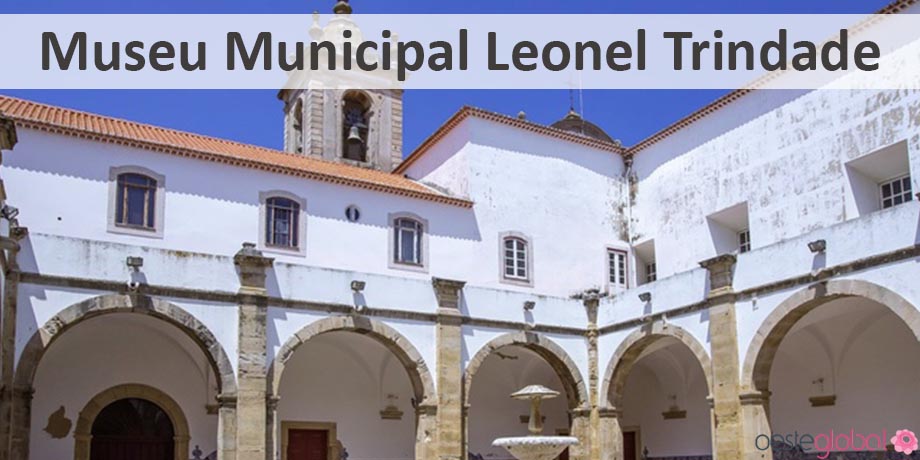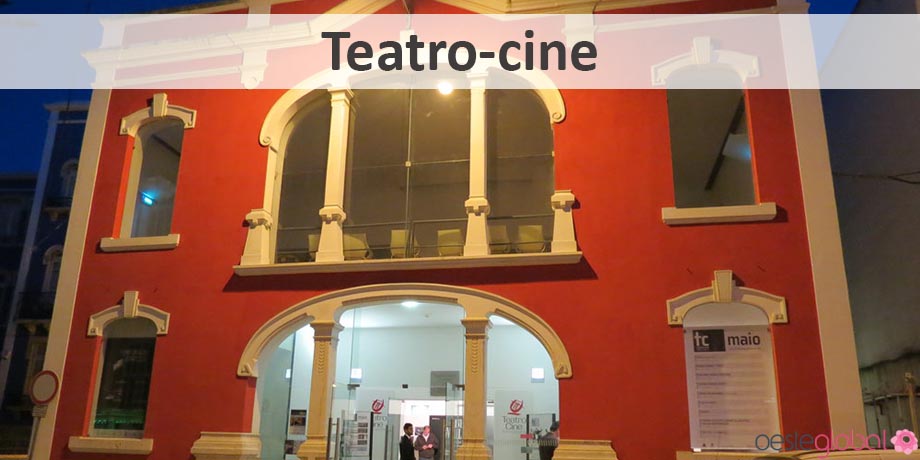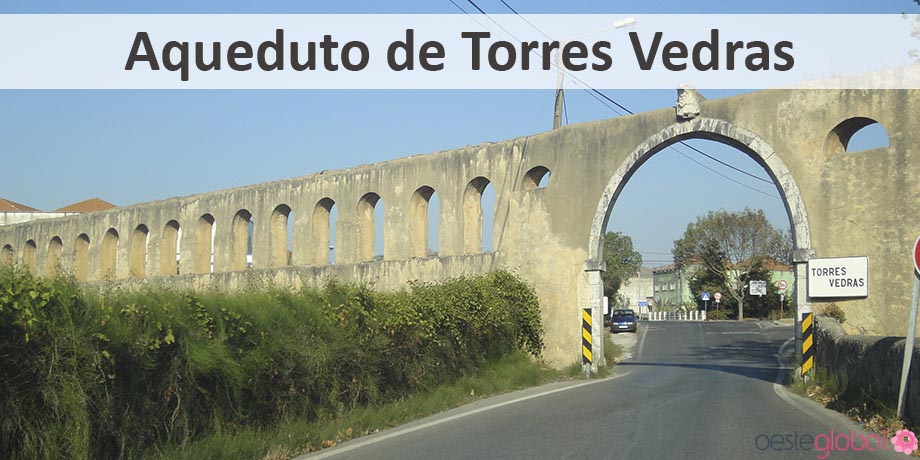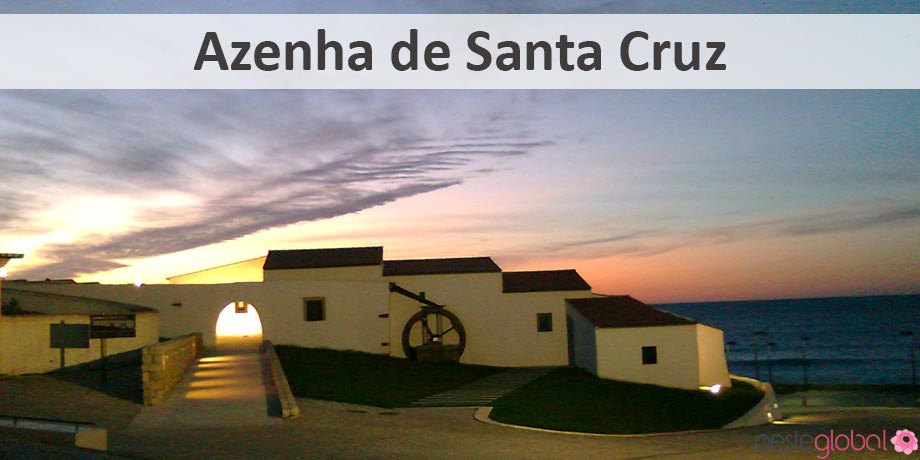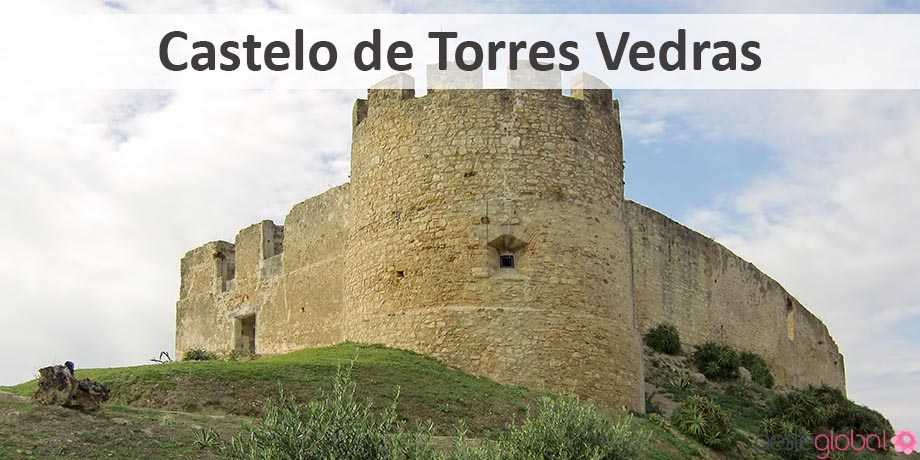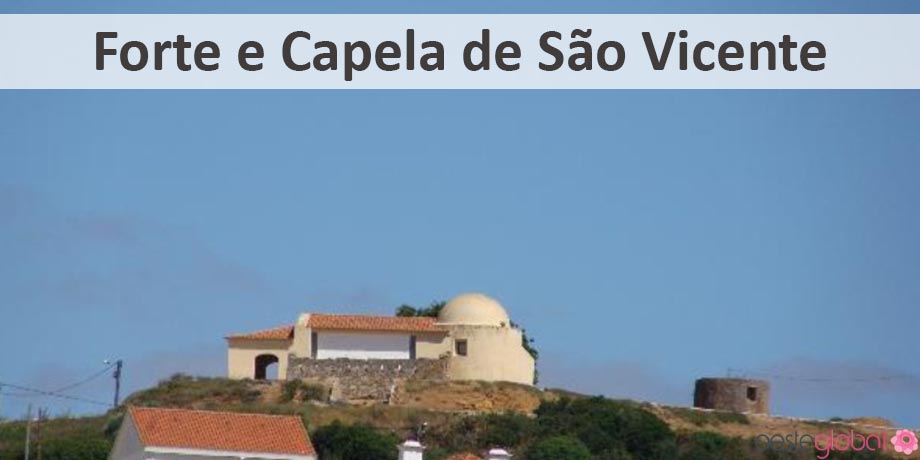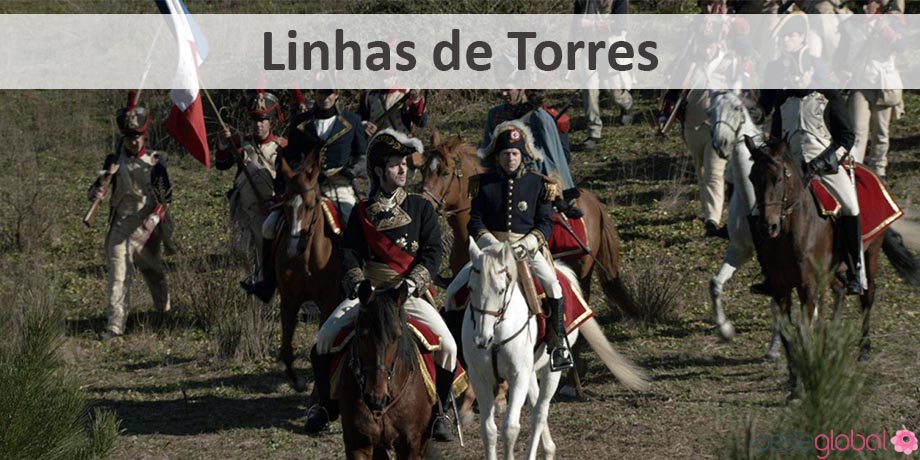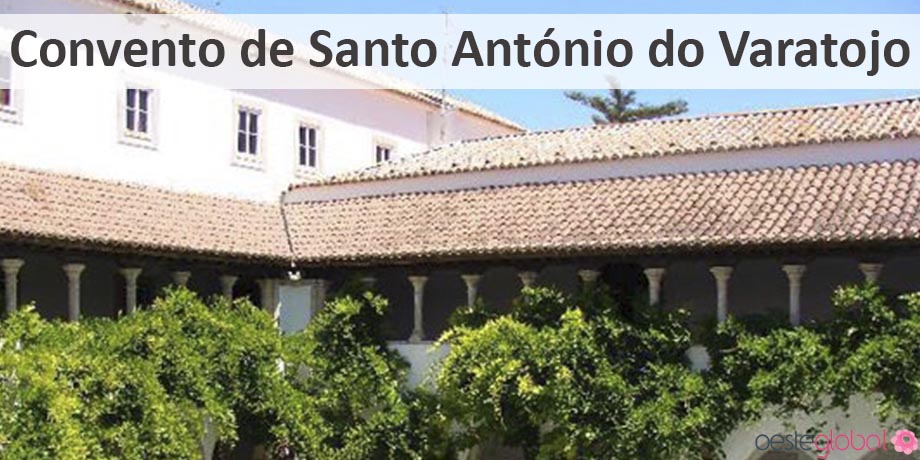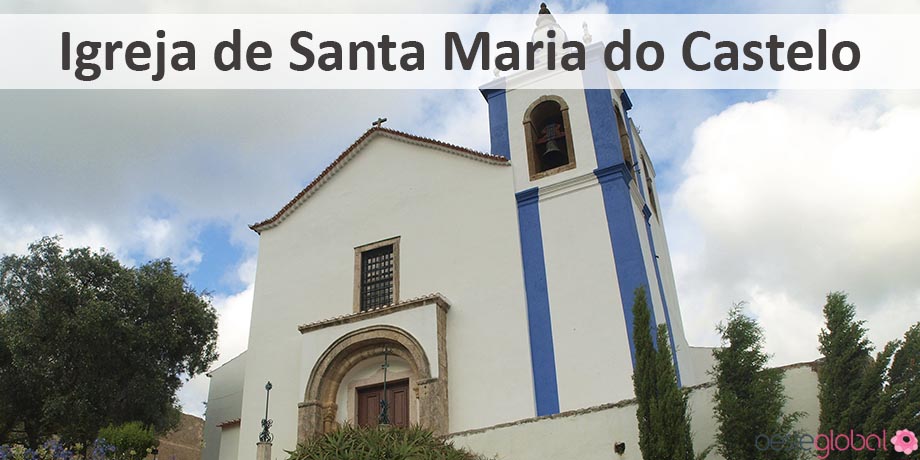Heritage in Torres Vedras
The municipality of Torres Vedras has become a tourist destination due to its traditions, celebrations, and especially for its military history and natural resources complementing the wealth of this county. A county with a strong presence in the struggle against the Napoleonic invasions, observable through the built heritage. However, the county has evolved into a modern, urban municipality, whose responsiveness to the needs of education, motivation and creativity in the arts, are answered by a vast cultural heritage.
Theater-cinema – This space aims to spread and create initiatives and artistic activities, educational and cultural, for purposes of Performing Arts, promoting and allowing community access to arts and culture, including theater programs, music and shows.
Stories of factory – a space that welcomes and defoliation stories, taking in its raw material and turning it into a product. This allows multiple artists reinvent the heritage donated by Dr. Jaime Umbelino. Therefore, the History Factory mission is on offer to the community the opportunity to be co-author of a universe of stories and complicit in creating memories of a place and a man, so that his legacy still present in memory and lives of people.
Hall – Municipal Gallery – consists of three areas, two are that in the County Hall building and (DoisPalos) is in the adjoining building. This gallery was inaugurated on April 25, 2003, after its refurbishment and November 2006, the room Two Hall allowed the visual arts exhibition and documentary nature shows, ethnographic, scientific and pedagogical. Since its opening, this space has hosted works by Eduardo Gageiro, Pedro Bettencourt, Nana Sousa Dias, Pablo Picasso, Ma Liuming, Antonio Chaves and Gonzalo Pena.
Municipal Museum Leonel Trindade – as a museum of archeology and history, this is for the study of the origins and evolution of the Man in the municipality of Torres Vedras. This museum aims to interpretation, preservation and dissemination of the old, new experiences and local traditions, included an educational component and leisure. The museum is an active institution, searching and collecting documentation and preserving the historical county and its heritage and memories.
Historical heritage
Castro of Zambujal – It is one of the most complex prehistoric fortified settlements that exist in the Iberian Peninsula. Finding three kilometers southwest of the city of Torres Vedras, being discovered by Leonel Trindade, in the year 1938. Excavations in recent years, the entity of the German Archaeological Institute, made it possible to reconstruct part of the fortification and distinguish multiple phases of construction . The Chalcolithic settlement was protected only by a central fortress with massive towers and narrow walls. In a second phase of the occupation, these structures were reinforced by building two additional lines of walls and Barbican joins the original fortress. In the third phase of construction, the Barbican and the entries in the second line of walls were softened, focusing on empowering the defensive logistics of each wall. Finally, the fourth construction hollow towers were erected. This town had been abandoned about 1700 BC. Its inhabitants devoted to activities related to the exploration, mining and metallurgy on establishing trade relations with both the Iberian Peninsula and other areas further, between the end of the third millennium BC .
City Hall Building – unknown to its construction date is only mentioned for the first time in the year 1337. In the years 1597 and 1634 was restored, however, in 1744, the building suffered damage due to a fire started by a prisoner who tried to escape prison. This fire destroyed almost all the medieval and modern documentation of the county. Its modern setting results of the restoration, completed in 1776, along with the construction of the fountain of Pombaline style, resting on the square, this is the only copy in Torres Vedras, with the following inscription: “JOSEPH. I.P.P. IMP. AD Carcer PO PVL. Q. commod. FONT. Hunc. PVBL. EXP. Praeses PROV. ERIG. CVRAVIT AN. MDCCLXXVI “, ie” The Magistrate of the District is to erect this source, at public expense, in the year 1776, for the convenience of the chain and the people, ruling Joseph I, Father of the Fatherland. ” Building Town Hall was the seat of the administrative offices of the county, and during the Peninsular War was used as the seat of war commissariat. In 2001, archaeological excavations were carried out inside the building relevaram nine Muslims silos containing several containers of Islamic ceramics, Caliphate period Córdoba (tenth and eleventh centuries), the first findings of the Arab occupation in the region, along these were also found pieces of the early years of Christian occupation and coins from the twelfth century to the fifteenth.
Historic center – situated in the old town of Torres Vedras, this goes back to earlier times to nationality. This consists of the old neighborhoods around medieval village, which does not currently exist. At its summit is the castle, where you can observe the existence of Roman mortars in some tanks. Over time, this center were built and reconstructed buildings of remarkable simplicity, squares and churchyard, the Town Hall, the Fountain of the pipes, the Church of St. Peter, the Church of Santiago, the Chapel of Mercy or the Holy Church Mary in the Castle, offer grandeur to the Historical Center.
Castle – primitive construction, evidenced by the presence of two Roman cisterns, since its first walls have been built by the Arabs. During the reconquest and taken the castle by the Christians in 1148, these walls were destroyed, and was immediately rebuilt in order to prevent the entry of Arabs during the siege of 1184. This castle has successive interventions during the medieval and modern times, as the construction of the Church of Santa Maria, in the wall of the waist. However, it was the reign of King Dinis, D. Fernando and D. Manuel, that there were more interventions, and what remains of the latter is the King Manuel I coat, accompanied by armillary spheres Manuelinas, with Criz of Christ . In 1809, the Castle would gain an important role in the Lines of Torres Vedras, as redoubt number 27, requiring the reconstruction of the walls and Hall of Mayors, destroyed during the earthquake of 1755. The walls were studded with eleven pieces of artillery and port Castle was demolished. The last siege of the castle took place in 1846, serving from the base to the troops of the Count of Bonfim. The fortress was bombed by the Duque de Saldanha, one explosion of such size and strength that left the Hall almost destroyed. This remained occupied by regular troops, by the end of the nineteenth century, and repaired several times. In 1929, the Ministry of War delegates this property to the City Council, which is responsible for its maintenance and cleaning. The Castle is considered classified monument by Decree No. 41,191, DG, Series I, No. 162 of 07.18.1957. Time – September to May: Tuesday to Sunday from 10am to 18pm. June to August: Tuesday to Sunday from 19h to 19h. Closing on public holidays.
Torres Vedras aqueduct – is in the urban area of Torres Vedras, is a masterpiece of Gothic architecture, and extends over two kilometers, being built to supply the Fountain of pipes. Unknown its construction date, your pipes structure was remodeled and enlarged in the second half of the sixteenth century, after the license Sebastian the local city council. This process coincided with the reclassification of the pipes Source in 1561, by order of the Infanta Maria. This aqueduct begins at the exit of Torres Vedras and crosses the Sizandro river, its channels when moving to the surface are based on back arches, the upper arch has up symmetrically on the lower arches. In places it passes over Sizandro river and the road that connects between Torres Vedras and Runa, presents a monumental arch with the coat of Torres Vedras, in one of their faces. This aqueduct is classified by the Decree of 16-06-1910; Government Gazette No. 136 of 06.23.1910.
Watermill of Santa Cruz – built in the late fifteenth century, it was classified as property of public interest in 1997 by IGESPAR. It is now an Interpretive Center related to grind cereal and bread manufacturing. And as a cultural center promotes and disseminates the traditions, memories and popular culture. This core provides a set of exhibition and projection of films and photographs of ancient times. It also works as Tourist Office.
Fountain of Canos – built in the fourteenth century, it was fed by the aqueduct and is located near one of the Parthians the medieval village, Port Corredoura. This fountain is a pavilion covered by a cross vault with ribs on conical corbels. On the walls of this there are five pointed arches, in which we highlight a set of Gothic gargoyles and a set of four shields, the faces of the speakers – “the front bearing the royal coat of arms dating back to the thirteenth century, and in all probability the reign of King Afonso III, and the two sides of the same period, representing three castles of severe lines, sober trappings of the old coat of arms of the former Turribus Veteribus “. The inside is constituted by a tank with two spouts baroque. Once, there was a pair made tank harness the water for supply for use of people and animals. This fountain is classified by the Decree of 16-06-1910; Government Gazette No. 136 of 06.23.1910.
Lines of Torres Vedras – Portugal to defend the third Napoleonic invasion in 1810, the Wellington strategy is the construction of an entrenched camp, between the Tagus River and the Atlantic Ocean, defending the peninsula of Lisbon, so take advantage of the rugged territory characteristics. The squares of land border had the retarding function to allow more time for the organization of work in the defense, and the goal was to keep Lisbon free of French troops, not only for the strategic value of its port, but also for safety reasons, in case of military failure, the English troops had landed in São Julião da Barra. On October 20, 1809, Wellington wrote a memo with instructions to be followed by engineering commander of the British army, Lieutenant Colonel Fletcher, for the construction of defense works. Thus, a military system was designed supported by four lines of defense – two main and two complementary. Construction began in the fall of 1809, in less than one year were built 126 fortifications, military roads and other natural barriers. The city of Torres Vedras was in a more advanced point of the 1st line and is 13 kilometers north of the 2nd line. The 1st line contained an extension of 46 kilometers, linking Alhandra the mouth of the Rio Sizandro. In order to reinforce the highest positions were prepared devices to flood the lands along the Tagus River and Valley Sizandro in order to hinder the crossing as the progression roads. The Lisbon defense lines continued to be improved by the year 1812, always waiting for a new onslaught of Napoleon, which came not happen. In total were built 152 military works, including redoubts and batteries, 37 were in Torres Vedras, equipped with 523 word-of-fire. The Fort of Saint Vincent and the Redoubt Scouting is one of the main points of defense in the west flank of the Lines of Torres Vedras.
Fort and Chapel of San Vicente – located north of Torres Vedras, the strong part of the fortified set of the Lines of Torres Vedras. In the early nineteenth century, Napoleon Bonaparte came into conflict with England successively invading other European countries in order to try to impose a continental blockade, intended to isolate and paralyze the enemy. As ally of England, Portugal challenged this blockade, as a result, the Napoleonic troops invaded Portugal and the royal family fled to Brazil, Portugal leaving the government, provisional, English Arthur Wellesley (later recognized as Wellington). This inspired by the works of José Maria das Neves sent a memo to Richard Fletcher, the October 20, 1809, ordering the secret construction of a set of fortifications, comprising three lines of defense with 152 bastions and 600 artillery pieces, and communication system between the signals of stations. In the first line of defense, it is this strong, comprising three strongholds, surrounded by a wall of 1500 meters long. The Forte de São Vicente was one of the strong points of these defensive lines, with 39 word-of-fires and a capacity to house 2,200 men. This is classified by Decree No. 47508; DG, Series I, No. 20 of 24.01.1967 ZEP and Decree No. 715/77, DR, Series I, No. 268 of 11.19.1977 – Special Zone of Protection (ZEP) joint Chapel and Church of Saint Mary and the Chapel of Our Lady of Ameal.
Fort of Olheiros – also known as Fort Canudo, this borders the fortified St. Vincent. Also considered as one of the most important points of the Lines of Torres Vedras, was more to the north of this, between Alhandra and Foz do Sizandro. Its plan is irregular polygonal, with 45 meters by 19 meters wide, very similar to Forte Grande do Sobral. Fort Scouting has a deep ditch, lined with stone, with a footbridge to the interior of the fort. Surrounded by a wall, a perimeter of 1500 meters, with a slope of stone masonry and a protective barrier on the road. eleven canhoeiras were recorded in the curtains, with platforms that hold the pieces of artillery, latejas pending, to counterbalance the shot reaction; seven guns, five caliber nine five six gauge. There is still a barn, covered by concrete slab. This fort was decommissioned and abandoned in 1818, three years after the Vienna Convention. This fort is classified by Decree No. 1156/2009; DR, 2nd Series, No. 212 of 02.11.2009.
Religious Heritage:
Church of Santa Maria do Castelo– inside the Castle of Torres Vedras, this church is the oldest of the four parish churches of the city. Possibly raised as Islamic temple, during the Arab occupation. Its construction dates back to the second half of the twelfth century, shortly after taking the castle by D. Afonso Henriques to the Moors in 1148. This church is protected by Our Lady of the Assumption, being honored on 15 August. By the early nineteenth century, on the night of August 14 were held several fires in the churchyard and on the castle battlements, to commemorate the day that D. Afonso Henriques conquered the castle. This presents unique architectural traces of the Romanesque style existing in the municipality of Torres Vedras, these excerpts were classified as National Monument and summarized the main and lateral portals.
St. Peter’s Church– also one of the oldest of the four headquarters of the city. It is known the existence of the reign of D. Afonso Henriques, but was rebuilt in the early sixteenth century, suffering new reconstruction after the earthquake of 1755. It features a small sacristy that communicates with the House of the Brotherhood of Clerics Poor, who worked as Municipal Museum in 1929. currently works as Notaries Parish.
Church of Santiago– resulting from the sixteenth century reconstruction of an original building, has undergone some renovation works, particularly in the eighteenth century, probably required by the corrosive action of flooding the Sizandro River, which during the winter flooding the lower part of the village.
Church of Our Lady of Mercy– one of the most valuable and beautiful churches of the city. It is part of a set of buildings of the Holy House of Mercy of Torres Vedras, where worked the Mercy Hospital and the headquarters of that institution. This church built between 1681 and 1710, in order to replace the old church of the Holy Spirit Hospital, which was contiguous to him, and that was in ruins. Precede the church a small churchyard limited by railing. In 1849, a cemetery north of this church was created, where they were buried the poor patients who passed away in the old hospital.
Clay Convent– also known as the Convent of the Religious Arrábidos, it was erected in 1570 by the Infanta Maria, daughter of King Manuel, with the aim of welcoming Franciscan monks. In 1834 this was abolished and dispossessed, and reopened in 1860. Implemented Republic in Portugal, the monastery was closed and came to be called Asylum Elias Garcia. The inauguration was presided by Teófilo Braga. Outside, there is a monument to honor the Exalted Mother of God, founded in 1908, to celebrate the 50th anniversary of the apparition of the Immaculate Virgin in Lourdes. In the convent nearby is the chapel of St. Joseph, built in the sixteenth century. The Asylum assumed an important role in combating the scourge of tuberculosis, in the early twentieth century, this was entrusted to the National Assistance for Tuberculosis in the second half of the century. The services of this asylum began to be operated by nuns, allowing the admission of patients. Remained this way until 1992, when the religious left to provide hospital services. Already in 1993 the Sanatorium Clay became designated Hospital Dr. José Maria Antunes Junior, extending its therapeutic action the treatment of pulmonology area of diseases.
St. Anthony Convent Varatojo– It is on the outskirts of Torres Vedras and was founded by King Afonso V in 1470. Former residence of kings, denominated to treat home. In 1474, the Order of St. Francis was the first to be received in this convent. It started as Convent of Franciscan Studies, becoming later the College of Apostolic Missionaries, for transfer of D. Pedro II, the António das Chagas. The convent is classified by the Decree of 16-06-1910; Government Gazette No. 136 of 06.23.1910.
Church and Convent of Our Lady of Grace– The convent was built in the sixteenth century between the years 1544 and 1580, the Friars Hermits of St. Augustine shoes, also known as gracianos. Its construction replaced the old building, which was erected in 1266, which was in ruins due to constant flooding from the river Sizandro, since it is located in the downtown area of Torres Vedras. Both the church and the convent are considered as a Public Interest Property ranked.
Jewish quarter of Torres Vedras– this is the National Jewish Quarters Network, since the city of Torres Vedras witness the presence of Jews when fall back to the reign of D. Afonso III, between the years 1248 and 1279, even though the first reference to their experience in adjoining houses of community members, in its own neighborhood, be from the late thirteenth century. During the reign of King Afonso III, it was built the synagogue, attested by a reference to “chaplain” of the Jews. However, the formation of the Jewish quarter occurred in the reign of King Afonso IV, that forced the village Jews to dwell in their own neighborhood. Initially, Torres Vedras Jewry occupied a street, where there were men of the two religions. In 1381, 25 Jewish families lived in the town of Torres Vedras, which were multiplying their number in the mid-fifteenth century, promoting an intense commercial activity. With the development and increasing community forced the expansion of the territory of the Jewish Quarter in 1469, occupying the entire street.





